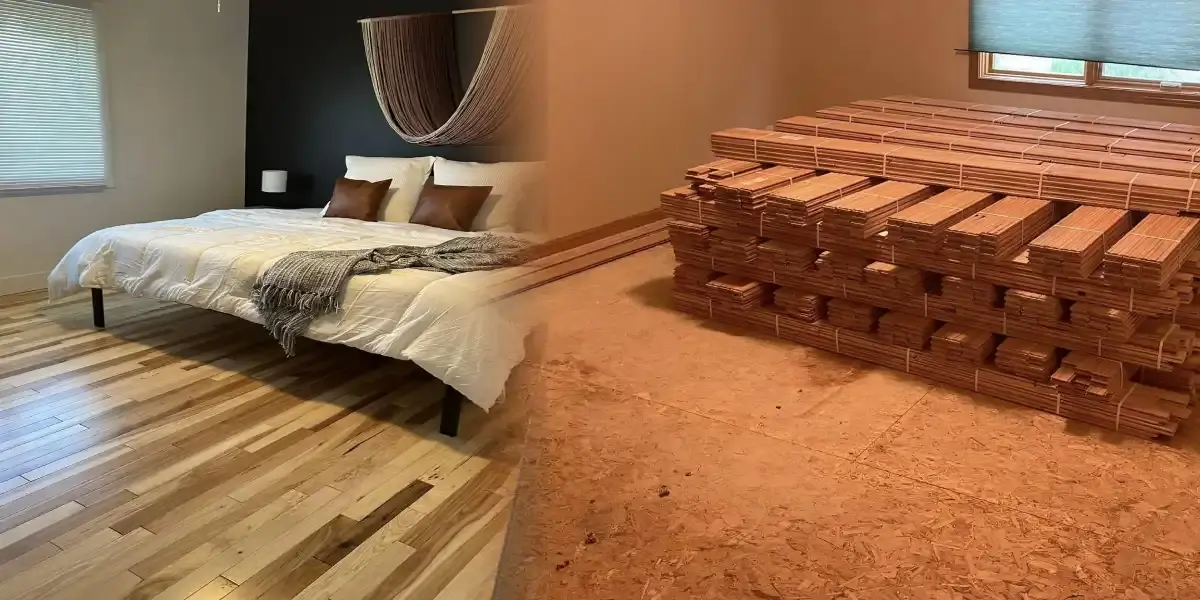Every homeowner often wants to give their homes a luxurious and aesthetic look. When it comes to the floor, everyone’s first choice is the vinyl.
Because, it has gained immense popularity for its durability, versatility, and affordability. Yet, as with any home improvement project, questions often arise about how to ensure longevity.
So, one of the most debated topics is: Does vinyl plank flooring need to acclimate?
Vinyl plank flooring needs to acclimate before you install it. Skipping this step can lead to some serious headaches down the road. Because vinyl floors are sensitive to temperature and humidity.
So, you have to give it some time to get used to the conditions in your home before you lay it down.
That means bringing the boxes of flooring into the room where you’re gonna install it and letting them sit there for at least 48 hours.
I know it’s tempting to dive right into the installation, especially when you’re excited to get that new floor down.
But trust me, taking the time to let the vinyl plank flooring acclimate will save you a ton of trouble later on.
Step-By-Step Guide To Acclimate Vinyl Plank Flooring
Step 1: Check Manufacture Guidelines
Before acclimating your vinyl plank flooring, read up on the manufacturer’s recommendations.
Every brand and type has its own set of rules about how long and where your flooring should get cozy. It’s like getting the inside scoop to make sure things go smoothly.
Step 2: Bring Flooring to the Installation Area
Well, now move the unopened boxes of vinyl plank flooring to the room where it will be installed. It’s like giving them a front-row seat to the temperature and humidity vibes of their new home.
Step 3: Open the Box and Remove the Packaging
Now, it’s time for box opening! Open the boxes and remove the packaging from the vinyl plank flooring. It is the process of acclimation that begins when the planks are exposed to the air.
Step 4: Stack the Planks
Let’s create a vinyl plank tower in the installation zone! Lay them flat and ensure they are evenly spaced to allow for proper air circulation.
It’s like setting up a chill spot for them to get used to things. As a result, they all get acclimated at the same time.
Step 5: Maintain the Environmental Conditions
Keep the installation spot feeling steady in terms of temperature and humidity. It’s aimed at that cozy, normal living or working environment vibe.
It’s like giving the vinyl planks a taste of what’s to come, so they can settle in without any surprises.
Step 6: Allow Sufficient Acclimation Time
Follow the manufacturer’s guidelines about acclimation duration. Usually, it’s a 24 to 48-hour shindig. Let your vinyl plank flooring get used to the lay of the land before you start the installation.
Step 7: Check for Visible Defects
Take a good look while those vinyl plank buddies are getting acquainted. Spot any hiccups, defects, or damages. By addressing issues before installation, you can save time and prevent complications.
FAQs: Does Vinyl Plank Flooring Need to Acclimate?
How Soon Can You Walk on Vinyl Plank Flooring?
You can typically walk on vinyl plank flooring immediately after installation. It is ready for foot traffic immediately, unlike some traditional flooring options.
But still, you should give it some time. At least 24 hours before you step on it. This wait helps the glue get stronger and keeps the planks snug in their spots. Also, you should follow the manufacturer’s instructions for installation and use.
What Happens If You Don’t Acclimate Vinyl Plank Flooring?
In some cases, skip-acclimating vinyl flooring may cause gaps, buckles, and warping. Also, it may expand or contract after installation when temperature or humidity changes.
If you don’t let the flooring chill, it becomes more sensitive to temperature and humidity. So, let’s keep the peace and give that vinyl plank flooring the acclimation it deserves.
Check Out More Articles Related to Floorings:
- Do I Need Expansion Gaps for Vinyl Flooring? (Explained)
- Does Vinyl Flooring Fade in the Sun? (6 Best Ways to Prevent From Fading)
- Does Laminate Flooring Make Your House Colder? (Explained)





